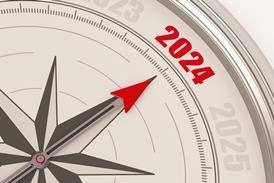December 2018 saw the SRA unveil its new ‘Digital Badge’. Rachel Roche outlines five things your firm needs to know about this controversial new regulatory feature.
The Digital Badge is a logo for firms to display on their websites as a way of confirming that they are regulated by the SRA.
It was given a generally frosty reception by solicitors, but this hasn’t stopped the SRA from continuing with their plans. So, like it or not, the Digital Badge appears to be with us for the foreseeable future. With that in mind, what form does the Digital Badge take?
There are several elements to the Digital Badge taking the form of:
- a shield outline with an arrow
- the current date
- text stating the firm is ‘Regulated by Solicitors Regulation Authority’
- verification software (which works in the background)
The verification software has two noticeable functions. It operates to display the current date as a way of confirming that your firm’s regulation certificate is currently valid.
It also comes into play when any visitor clicks the badge to learn more, taking them to a separate web page which displays confirmation that your firm is regulated. This page also sets out some of the main benefits which regulation brings to consumers of legal services.
1. How do I put the Digital Badge on my firm’s website?
To add the Digital Badge to your firm’s website, you will need to visit the SRA’s page on the Digital Badge and go through the step-by-step registration process. This will require your firm’s SRA membership details and also copying some code to the homepage of your website.
2. Do I have to display the Digital Badge?
Depending on your feelings about the SRA, you might not like the idea of having their badge featured on your firm’s home page. If so, the good news is that the Digital Badge is voluntary at present so you can choose to opt out. The bad news, however, is that this is set to change. On the 25 November 2019, it will become mandatory for firms regulated by the SRA to display the Digital Badge on their website.
3. Could the Digital Badge be a good thing?
Whilst some solicitors may view the Digital Badge as just another burden of regulation, displaying the badge can bring benefits. For potential clients, trust is often a major consideration when choosing their legal representatives. The law is a knowledge-based industry and so, by definition, when a client engages a solicitor they have to place some degree of trust in that solicitor’s expertise.
SRA regulation, with its emphasis on client guarantees, and the maintenance of quality standards within the profession, can therefore be a major selling point for a regulated firm, especially when competing with unregulated businesses. Where an unregulated firm might be able to offer lower prices due to their freedom from regulatory overheads, it cannot offer the same protections as those afforded by a regulated firm.
Getting this message across can be difficult, but the Digital Badge does help in several ways:
- it aims to create a recognisable logo for regulation
- it provides a quick and easy method for potential clients to verify your firm’s regulatory status
- it explains the most significant benefits of regulation to potential clients who click on the badge
4. Can the Digital Badge be used in other ways?
Unfortunately, the SRA has insisted that regulated firms may only use the Digital Badge on their website. This means you cannot display the logo in any other form, including email signatures, letterheads and advertising materials.
Given the possible benefits to firms and clients described above, it would make sense for the SRA to allow regulated firms to use the Digital Badge as widely as possible. After all, the more widespread it is, the more recognisable the logo becomes, and in turn, the higher the profile for regulation and its benefits.
But, at present, the Digital Badge remains restricted to websites only. Only time will tell whether the SRA decides to relax these rules.
Comment - could the Digital Badge be so much more?
The SRA’s justification for curtailing use of the badge is that the verification software will only work through websites. Any uses beyond this, they say, would open up the system to fraud.
However, as I argued in a recent article for the Law Society Gazette, it would not be difficult to mock-up an apparently genuine Digital Badge and circumvent the software.
More importantly, the strength of the system relies upon consumers knowing the difference between badges which are real and those which are fake. If the profile of the Digital Badge is kept low through the SRA’s restrictions, how will the public gain sufficient familiarity to enable them to spot the difference?
The Digital Badge has a chance to be a positive change. It might take time but, if the Digital Badge were freed from the SRA’s overbearing restrictions, it could become a recognisable ‘quality mark’, something which potential clients would actively seek out, particularly in sectors which include non-reserved legal activities.















